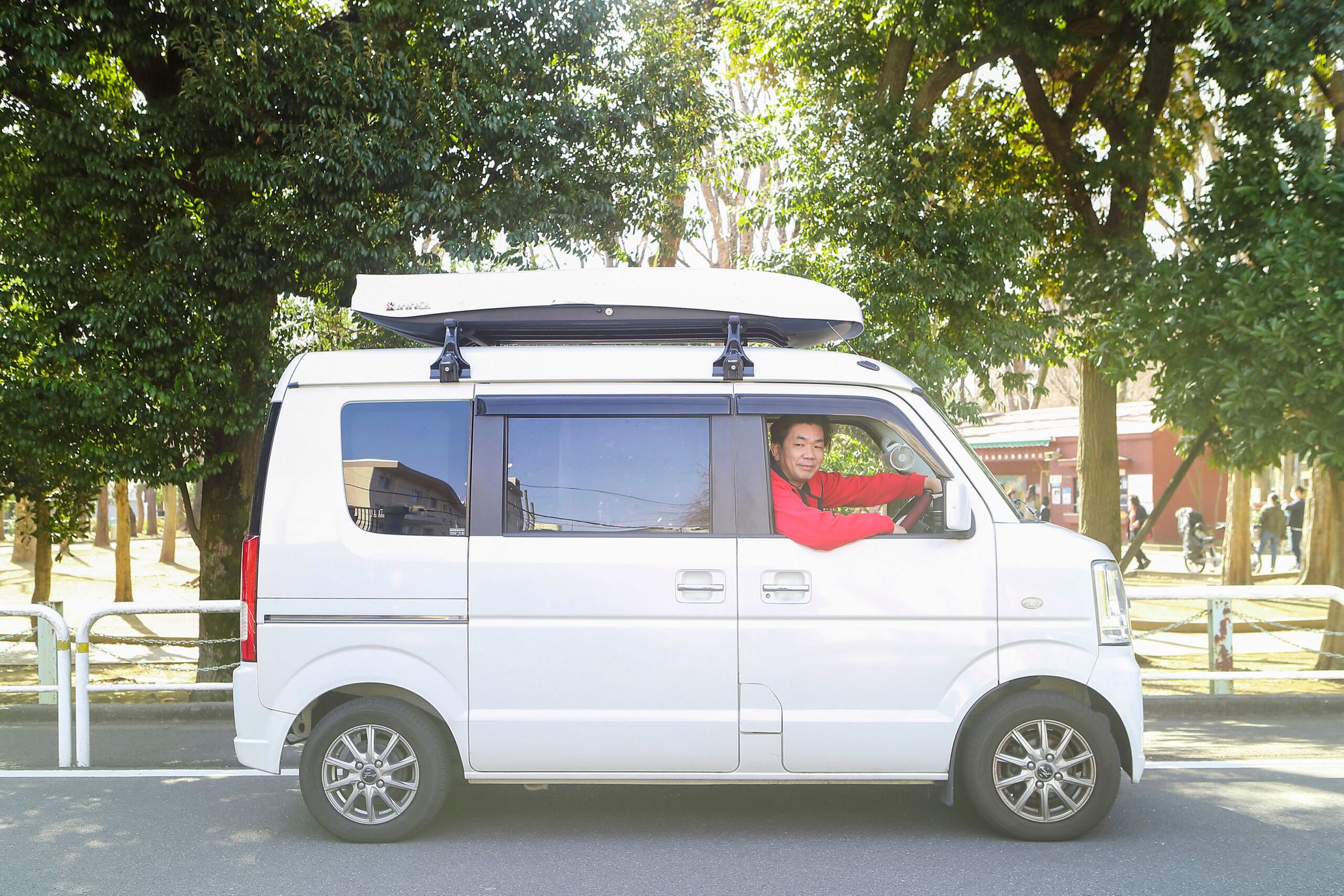
“I was supposed to be free, but I feel hindered every morning.”
These are the words of manga artist Ichiro Inoue, who let go of his home after a divorce. His small van given to him by his father goes wherever the wind takes it. At his destinations, he draws manga comics and posts them onto Twitter, where he’s amassed 30,000 followers at the time of writing. Everyone’s eyes are on this nomad manga artist.
Because of the worldwide uncertainty brought on by the coronavirus pandemic, the “van life” lifestyle is catching people’s attention. The following is the authentic voice of someone who makes the extraordinary, ordinary via this budding lifestyle.
“I felt like it was ridiculous to buy a house and start all over again”
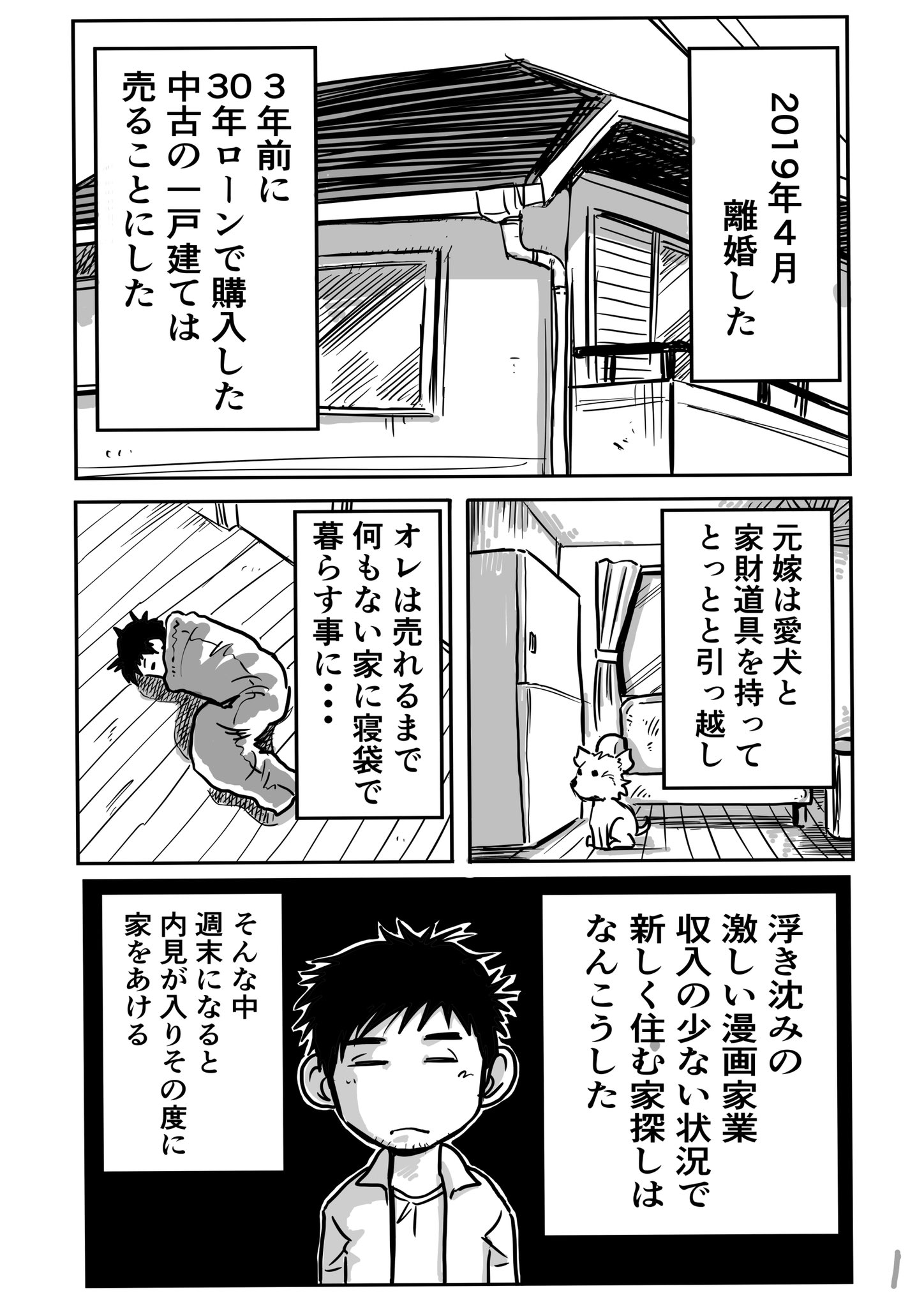
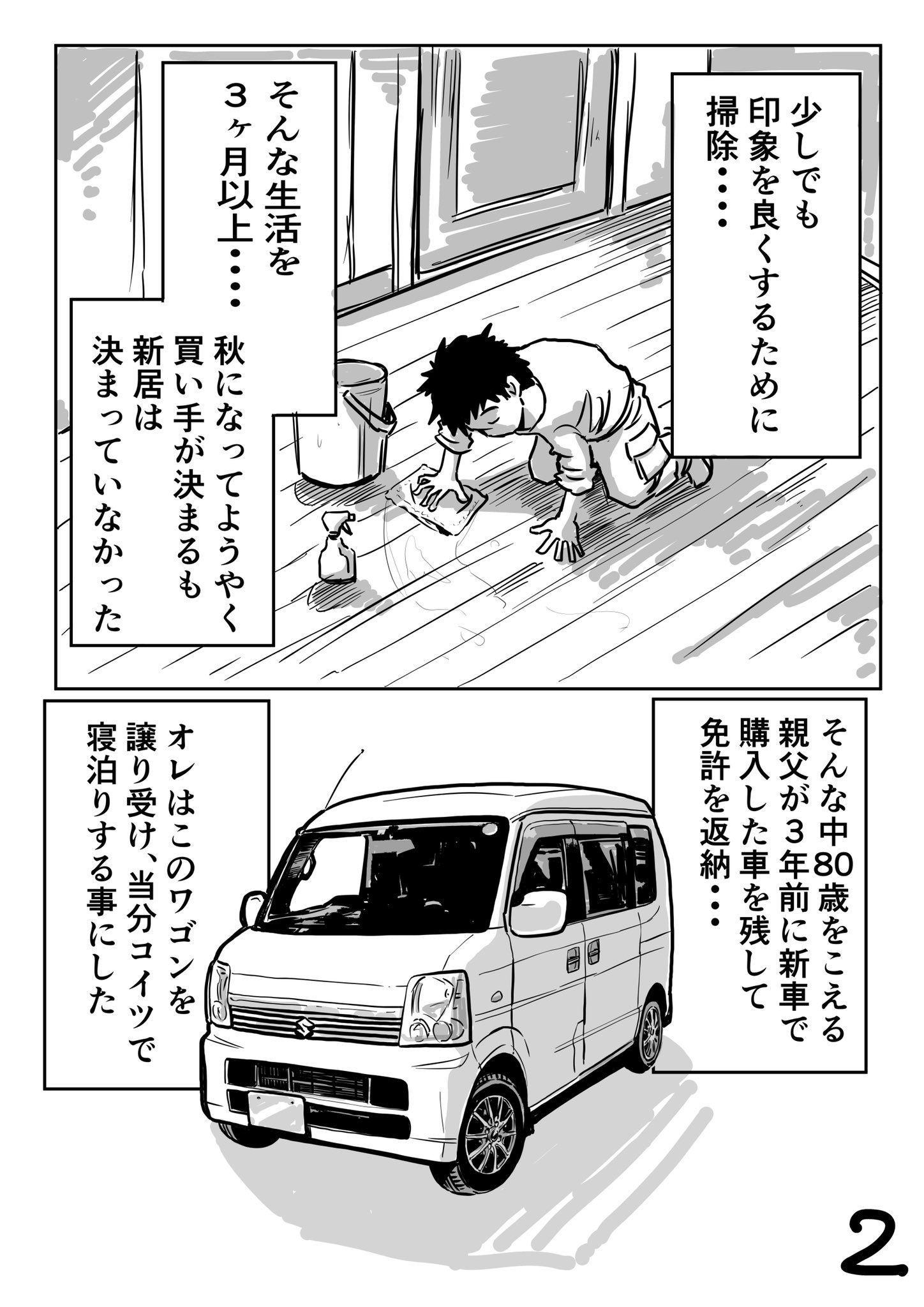

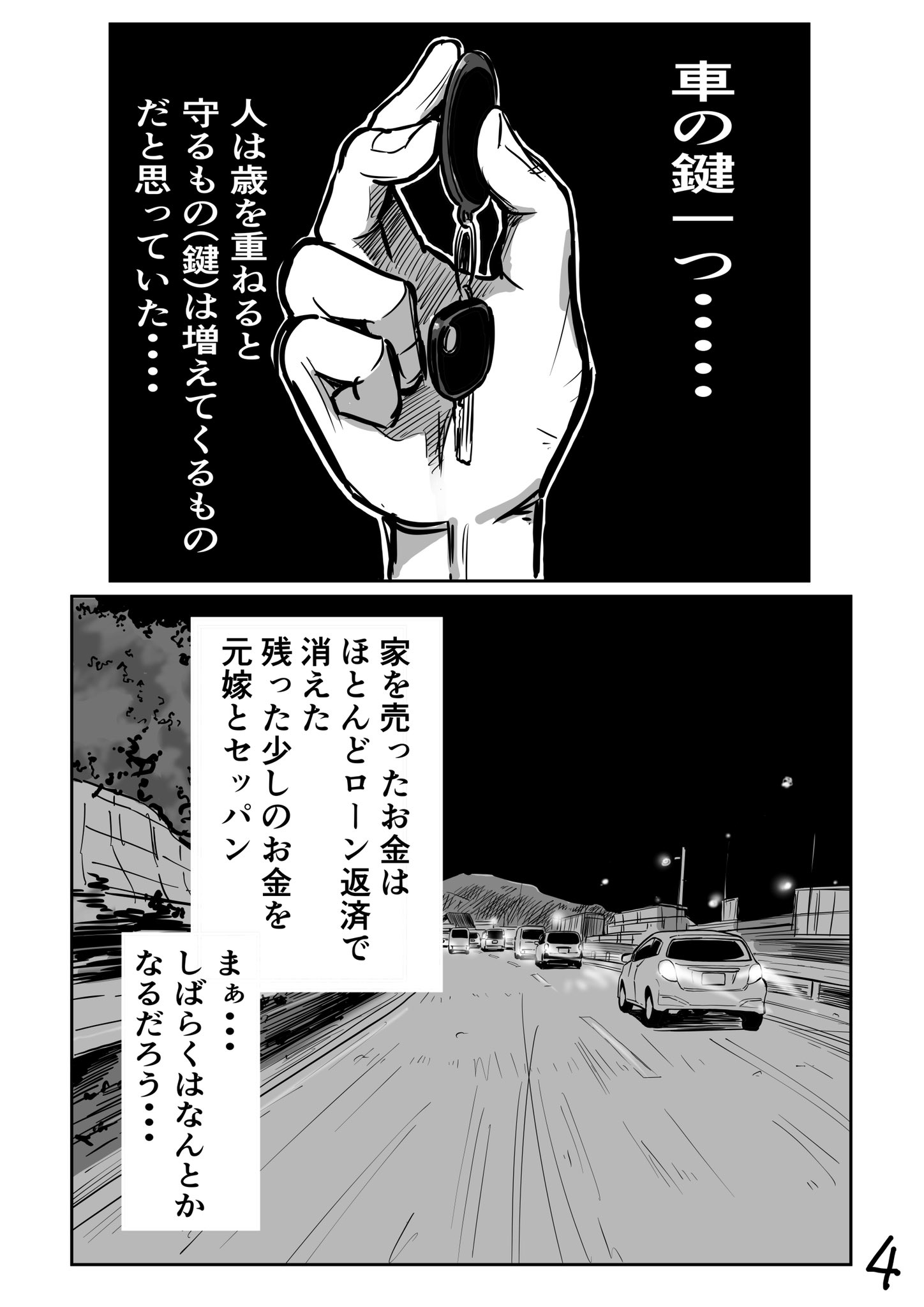
©Ichiro Inoue
――I heard you started living your current lifestyle because of your divorce.
Ichiro Inoue (Hereinafter Inoue): That’s right. I bought a second-hand house one year before getting my divorce, but we sold that and divided the assets. Moving out was inevitable. You know how the biggest purchase of your entire life is a house? Well, I felt like it was ridiculous to buy a house and start over again. I didn’t have the willpower; I thought there was no point. Also, I didn’t have any work back then, so I had nothing to lose.
――Did your financial situation play a big part?
Inoue: It did, big time. For some time, my annual income was close to 20 million yen. But I had a slump where my work wasn’t getting published. I used to work for gambling magazines, but they discontinued one after the other. My monthly earning was down to 100,000 yen. While I had less work, my then-wife was working, so she didn’t have to depend on me. Her capability to be financially independent pushed us to go through with the divorce.
――You inherited the Suzuki Every Wagon from your father, which became the foundation for your new life.
Inoue: My dad had gotten it around three years before I got divorced, but his mileage on it was just 30,000 kilometers. He didn’t ride it so much. When I saw the car, I was convinced I could live in it with no issues. So, I decided to live in a car, and that encouraged me.
――Highway rest areas and parking lots are crucial for your lifestyle. What is it like to live in a car every day?
Inoue: Even if you own a car, you can’t drive it at full speed in the city, right? That’s not the case for me. When I start the car, I go full throttle; I get thrown into a world where cars go at 100 kilometers per hour (laughs). That kind of life is rare. I began to be able to tell the condition of my car engine by the climate, temperature, and humidity of the day. You can’t gain this kind of skill if you ride your car off the highway. I realized my car is my life partner, which surprised me a bit.
――You’ve reached the level of professional drivers. I’m interested in learning what kind of routine you have.
Inoue: Because I work at night most of the time, I try not to cause trouble to the locals. Highway rest areas and parking spaces are specifically made for drivers. If you have basic etiquette, then you can do whatever you want at night. I turn off my engine, but long-distance truckers keep them on. When I get up around 10 am, and am feeling hungry, I eat breakfast. But I usually work for a while after I wake up. What’s critical here is the highway time limit. If the ETC gate (Electronic Toll Collection) tells you you’ve been staying on the highway for too long after calculating the time you entered the highway and how long you’ve driven for, then it might not open. Or someone might stop you. I’ve memorized how long I can stay, so I decide on my work quota and build my schedule around that.
――How do you draw your manga comics?
Inoue: I made a workspace in the trunk, and that’s where I draw on my iPad. My portable power supply is essential. I always check how much battery I have left, and when I’m running low, I use my onboard battery charger. From noon to evening, I spend my time moving from place to place. The most inconvenient thing about this lifestyle is traffic, so I don’t drive too often on normal roads from 5 to 6 pm. I use that time to work or drive on the highway. But it depends on how liveable the car is, so the seasons and climate dictate that. During summer, the inside gets deadly hot (laughs).
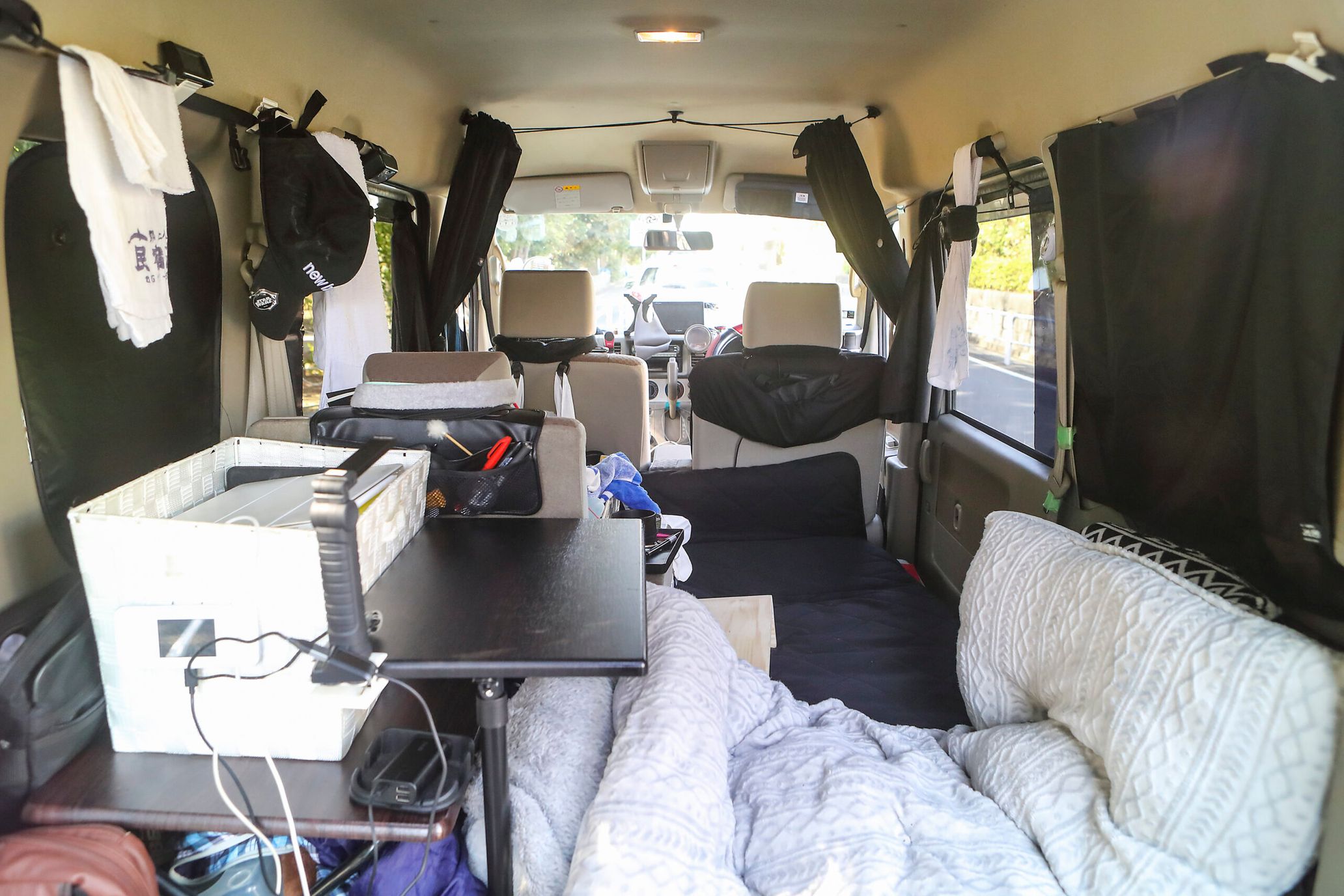
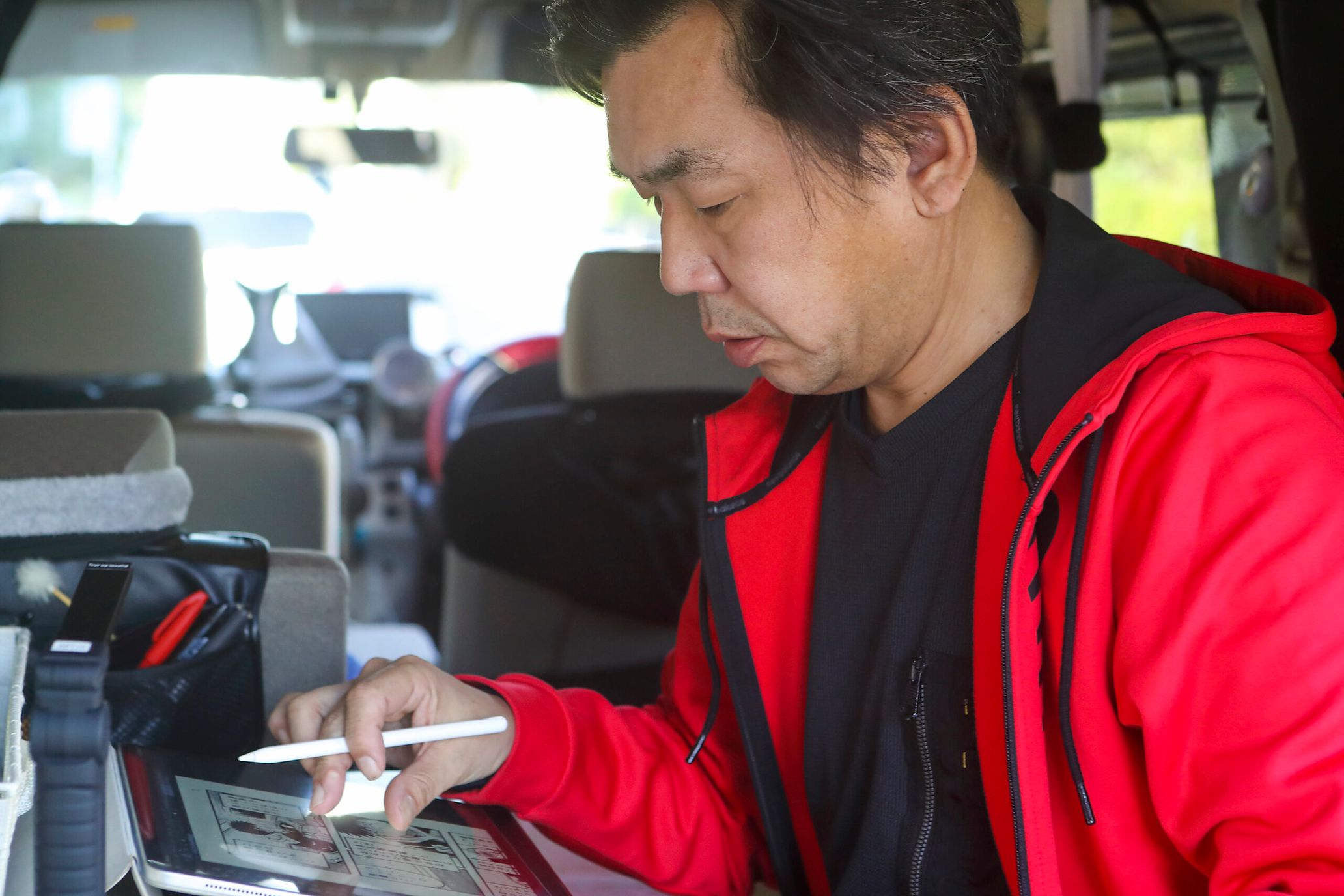


――What do you eat, and how do you bathe?
Inoue: I mainly eat food from highway rest areas and convenience stores. I wash my clothes once a week at laundromats and bathe at public bathhouses or spas. Discovering the food and places I enjoy, region to region, is one of my favorite things to do.
――You need to spend money on gas and highway fees, so I imagine living in a car costs more than we think.
Inoue: In terms of driving, there’s short-distance and long-distance. For example, if I were to drive long-distance from Shibuya to Shizuoka, the highway fee would be around 3,600 yen. At midnight, it would be a little over 2,000 yen. Filling up the tank would cost 4,000 yen, and one-third of the speedometer would be left. If I were to drive short-distance, I would only have to drive within one area. It would cost me around 250 to 300 yen. Once it’s morning, my “lodging” costs would amount to around an extra 300 yen, so I think I get good value for my money. But pumping gas is expensive; I used around 600,000 yen last year! That surprised me (laughs dryly).
――Is there a particular spot you’re based in at the moment?
Inoue: It’s as if I’m expanding my base every day. I sometimes do touristy stuff, but it’s not like I have the goal of going to every single prefecture in Japan. So, I drive around the same spot over and over. Eventually, I get a feel for the city’s landscape, which takes me about a week to figure ou
――You have depictions of pachinko (gambling slot machine) in your manga, but do you play it?
Inoue: I do, I do! Especially in spring and summer. Like I said before, it becomes boiling in the car, so I run to pachinko parlors for shelter. I used to draw manga comics about playing pachinko on vacation. As someone with experience, I was confident I could aim even higher. Of course, I wasn’t going to turn that into my job, but it was one way to make a living. I think I’ll make some more manga comics about that.
――I’m looking forward to it. Recently, there’s been an increase in manga and films about living in a van or a car. Does it feel like more and more people are paying attention to you because of that?
Inoue: I felt like people were paying attention last year, right after the emergency announcement was declared, more than recently. I felt like people were starting to pay attention as society started working remotely. Nomadland could very well receive an Academy award; I think that film is close to my situation. The trendy van life lifestyle doesn’t apply to me. Honestly, if I had millions of yen to spend on a camping car, I’d rather live in a nice room. Not that I actually would (laughs).
“You can say I travel because I’m in search of a place where I can be free”
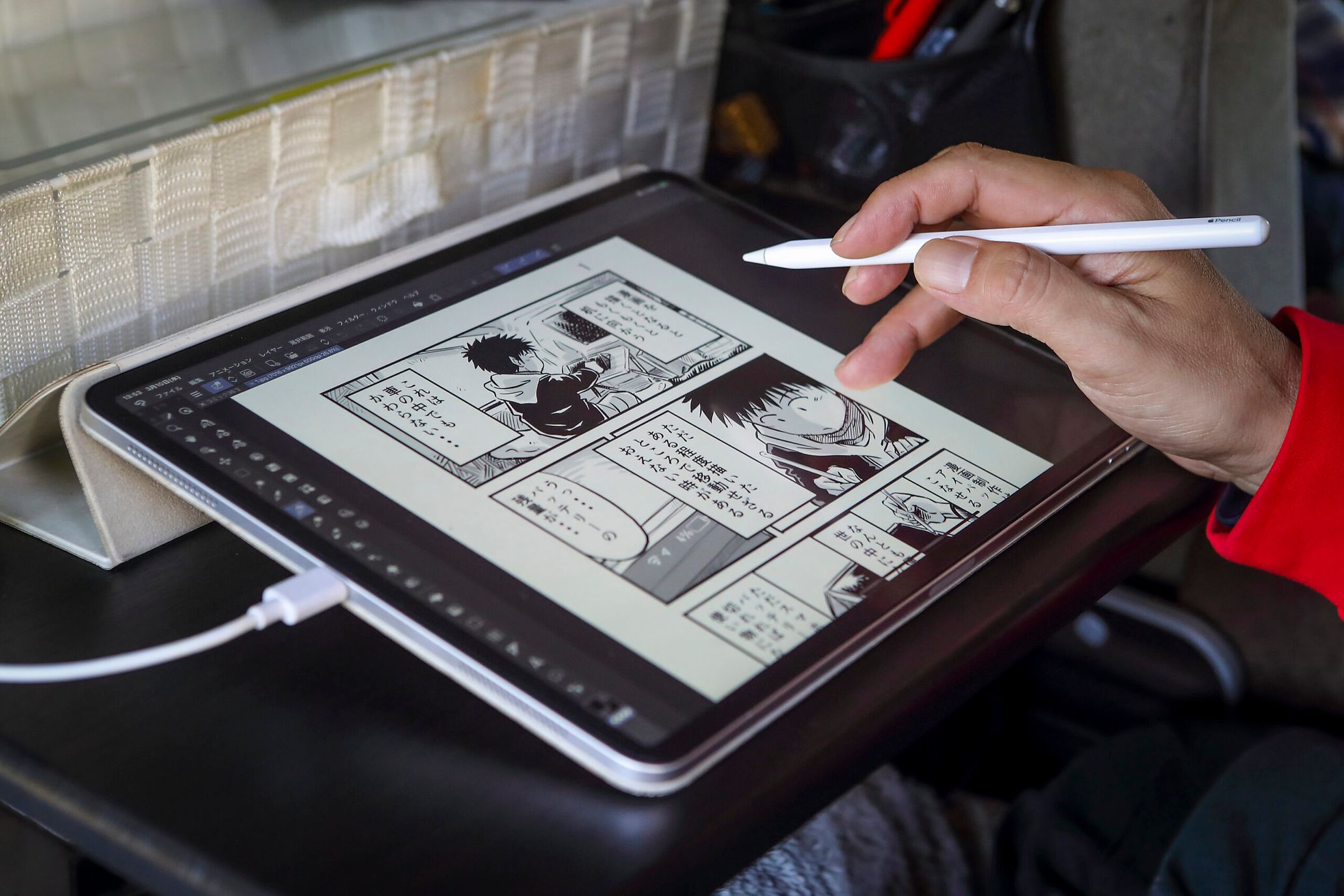
――In December 2019, you posted your manga, #離婚して車中泊になりました (I got divorced and started living in my car) on Twitter. The government declared a state of emergency right after that, and people’s criticism towards traveling from prefecture to prefecture became harsher.
Inoue: Yes. People would hunt for cars that had license plates from outside any prefecture. There was a part of me that felt guilty for visiting other prefectures. It was hard. At the time, I wanted to draw something touristy, like visiting many places I’ve never been to. But it became increasingly difficult. Ultimately, I drew a manga about going back and forth on the highway.
――Why did you decide to post your work on Twitter in the first place?
Inoue: I started living this lifestyle around October 2019. As I mentioned in the beginning, I barely had any manga work and was at a desperate point in my life. I thought it would be fun to do. I had an optimistic mindset; even if I didn’t have work, I still had the money from selling the house, and if I took on some illustration gigs, I could support myself for a year or two. But the problem was I got rid of all my household goods, so I couldn’t draw manga even if I received work (laughs dryly). When I bought an iPad out of necessity, I realized I could draw pretty quickly. At the same time, it also reaffirmed my love for drawing manga. I thought it would be fun to travel all over Japan and post my manga online. That’s why I posted it.
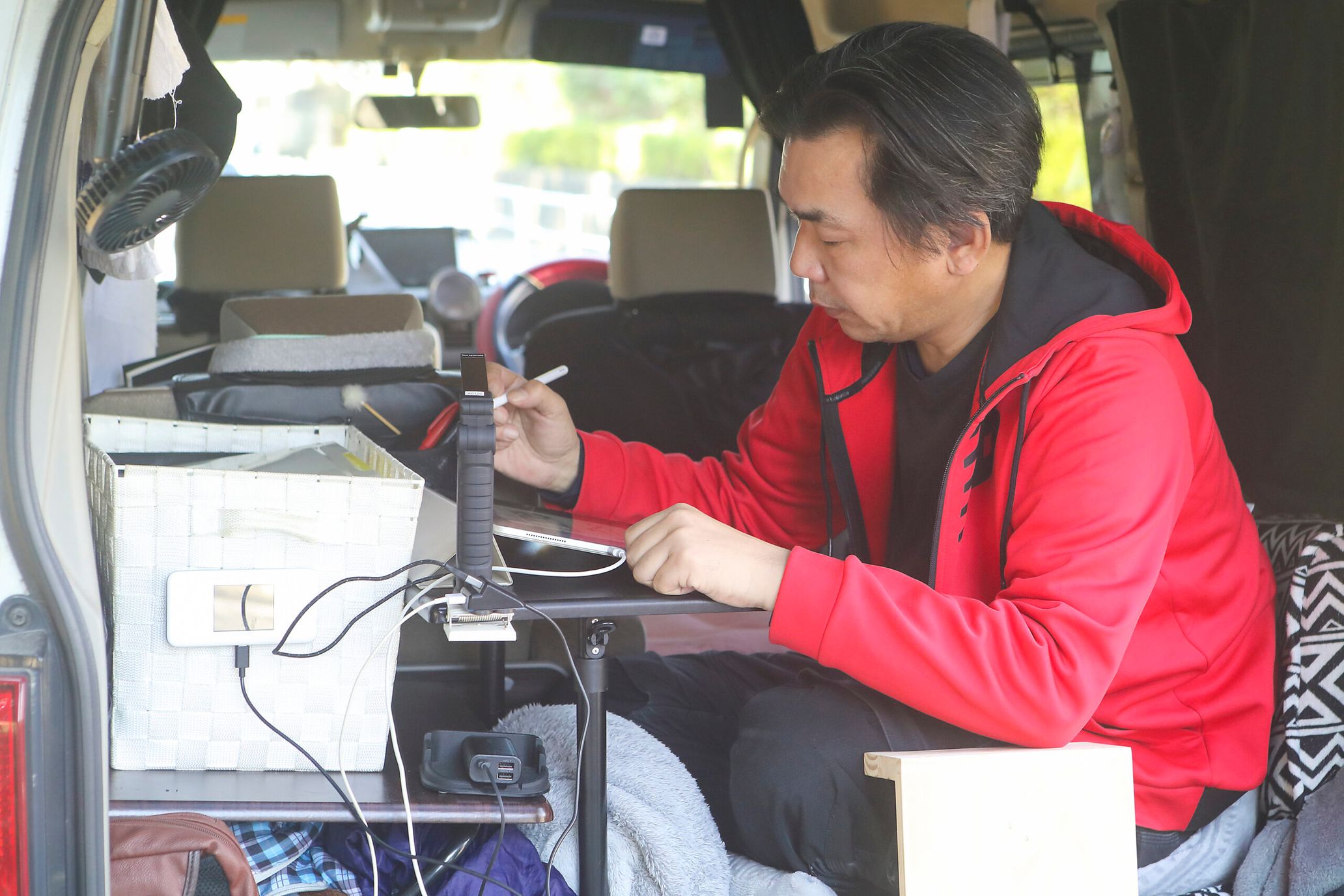
――You were genuinely filled with hope.
Inoue: Yep. Back then, I thought I had a shot because there weren’t any manga artists living in a car. But I was perplexed to see how I got more of a sympathetic reaction from people (laughs).
――There’s a sadness to your manga- perhaps that’s one reason. Your stories usually end without a punchline, which explains why it feels sad.
Inoue: For the readers, there is a myriad of ways something can be interesting. Pursuing that and creating fiction are two sides of the same coin. If you think about it, you seldom have a punchline in your daily life. My motto for making manga is: “As long as one out of 100 manga stories is interesting, then I’m alright.” I’m happy with illustrating small things I notice every day on four pages.
――The first volume of #離婚して車中泊になりました (I got divorced and started living in my car) is going to be published on March 22nd through Asahi Shimbun Publications. I can only imagine how excited your fans are.

離婚して車中泊になりました (I got divorced and started living in my car) is out on March 22nd. There are 30 new pages included
Inoue: I’m grateful my manga comic is going to be published, but personally, nothing has changed. And to be frank, if somebody asked me if I want the book to sell well, the answer would be no. What’s more important is whether I can continue living this lifestyle while enjoying it. As long as I can maintain that motivation, I could post my manga comics via various mediums aside from paper books, such as Twitter, note, and YouTube.
――I see. You mentioned how you were perplexed just now. I feel like there’s a conflict of interest between what you want to draw and what the publisher and readers want.
Inoue: That’s true. I’m not against those who end up adding fictional elements because they want to make interesting content. However, a part of me feels like it’s insincere to glorify solo camping or living in a car. It’s interesting because there are hardships, not just pure fun. All I’m doing is going with the flow because I don’t dislike it. If people call this manga “The bible of van life,” then I’d be like, “Well then, I’ll go along with it!” (laughs). I want to play it by ear.
――Do you have a goal for your lifestyle?
Inoue: Much like a TV series protagonist whose ending hasn’t been decided yet, I don’t know what my goal is. It’s not like I’m looking for a place to settle down. But I make discoveries every day, and I get ideas just from driving. In the past, I would sit at my desk and groan as I tried to come up with a story. Now, I have so many things I want to draw! I feel like it’s something many manga artists go through (laughs).
――As a nomad manga artist who let go of everything, do you feel free?
Inoue: I get told “You’re so free” or “I admire you” a lot since I started living this way, but in reality, there are so many inconveniences. I mean, even when I’m tired, I can’t stretch out and sleep. There are a lot of risks too, like parking my car somewhere. Sure, I’m able to discover intriguing things, but in my case, I start each day with “Where shall I go today?” This is when I feel restrained the most. At the beginning of my journey, I didn’t have any work and had used up my savings, so I was constantly worried like, “What should I do?”
――I’m sure there’s freedom that comes with being able to travel anywhere within the country.
Inoue: That’s what you would think, yeah? If you had the opportunity, where would you go? Everyone goes outside because they have somewhere to be. You rarely come across people who stay outdoors forever, even though they don’t have a destination. It’s comfortable staying in one place where you feel at home. I think it brings you the most happiness. I don’t feel any freedom in going to a place I’m unfamiliar with. You can say I travel because I’m in search of a place where I can be free.
――You don’t hear of a manga comic about a destination-less protagonist on a trip.
Inoue: Right? People usually feel grateful when they go on a trip. Or they discover fun things they don’t get to experience in their daily lives. But for me, this is my life.
――You don’t have a goal regarding your lifestyle, but do you have any goals as an artist?
Inoue: Because the word divorce is in the title of my book, people focus on that. But my divorce is truly insignificant. You could read Twitter manga without having to think: “Yes, his story begins with a divorce, but such background information is made to add believability to fictional characters. There should be a degree of reality to the author because he’s a real human being.” The manga format we have today is only one variation- there’s got to be other manga formats that fit the current era.
――What sort of format do you mean?
Inoue: You know those friends you can comfortably be with without exchanging words? I hope I could have that sort of relationship with my readers through my manga where not much happens, aside from exciting or shocking things that occur from time to time. I want to come up with a new form of communication via manga comics. There are infinite possibilities and stories, so I wish to create “long-distance” manga series as my life’s work (laughs).

Ichiro Inoue
Ichiro Inoue was named the Best Newcomer by the Tetsuya Chiba award in 1994. He mainly created gambling manga afterward. He currently lives in his car due to personal circumstances and draws manga as he travels all over the country. He posted his manga essay, #離婚して車中泊になりました (I got divorced and started living in my car) on Twitter. You can read 家なき男~ニシヘヒガシヘ~ (A man without a home; to the west, to the east), his manga essay about a man who got a divorce and lost his family and home, on DMM Pachi Town. You can read 車中泊漫画・井上いちろうが喰らうう (Ichiro Inoue, a manga artist who lives in a car, eats), his manga essay focused on eating and living in a car, on Kae Life.
Twitter:@haibiitirou
Photography Satoshi Ohmura
Translation Lena-Grace Suda

